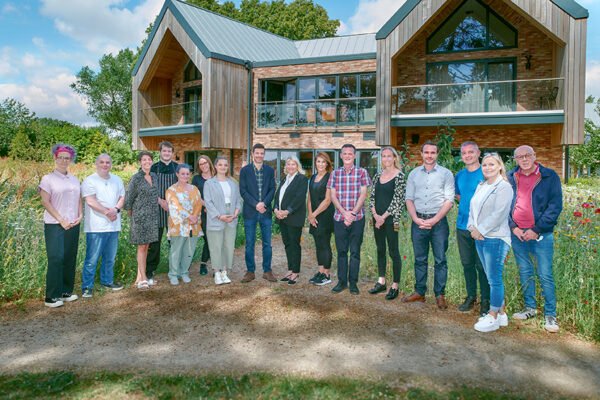
Four Ways To Make Brainstorming Sessions More Effective

Businesses now more than ever are operating in an ever competitive environment. Driven by the rapid growth of the internet and social media, businesses are under consistent pressure to develop new original creative ideas. Great ideas not only for their clients and customers but also to stay at the forefront of their respective industries.
Idea generation therefore is the fundamental business ‘activity’ which sets in motion all the processes which follow after. New ideas for most businesses usually come from creative brainstorming sessions. Team brainstorming sessions for some businesses can be very fruitful, yet for other businesses can feel tedious or unconstructive.
Considering their importance, especially since new ideas can indirectly contribute towards a business’s survival and sustainability, what can be done to drastically make brainstorming sessions more effective?
Provide Insight
As the senior figure – whether you are the CEO, managing director, manager, team/project manager – your team and employees will always look to you for guidance. That’s not to say you have to babysit them but rather provide them with clear guidance and take a full attention approach.
 Before your weekly or monthly brainstorming sessions, send every employee a brief email letting them know how each client and/or customer segment is performing in relation to your businesses actions and contributions. Additionally, also add notes on any feedback you have received directly on previous ideas and projects from clients and/or customers.
Before your weekly or monthly brainstorming sessions, send every employee a brief email letting them know how each client and/or customer segment is performing in relation to your businesses actions and contributions. Additionally, also add notes on any feedback you have received directly on previous ideas and projects from clients and/or customers.
By providing your team with this knowledge, you are better enabling them to understand the needs and the current situations of the businesses clients or customer segment’s. Through this, they will have a clearer focused-approach when researching and thinking of ideas.
Create An ‘Embracing’ Culture
 Sharing ideas in front of everyone can be a very scary prospect depending on your personality type. Employees often feel apprehensive or shy to contribute because they fear they will be judged if they say something outlandish or too out the box.
Sharing ideas in front of everyone can be a very scary prospect depending on your personality type. Employees often feel apprehensive or shy to contribute because they fear they will be judged if they say something outlandish or too out the box.
You don’t want your employees to have such ‘fears’, so develop a ‘no idea is wrong or stupid’ policy during brainstorming sessions. Also, don’t be afraid to consistently reinforce this message before and during every brainstorming session. In doing so, you will facilitate a comfortable environment which allows every employee to feel unafraid to contribute.
If you find that there are certain employees making snarky comments or harsh criticisms of others ideas, take action rather than allow it to continue. You don’t need or want them to knock the confidence of others, make clear to them that such behaviour will not be tolerated.
Offer Preparation Time
As the infamous quote by Benjamin Franklin goes: “by failing to prepare, you are preparing to fail”.
Ideally you want your employees to come in all cylinders firing – throwing creative ideas left, right and centre. In reality though, you may find your brainstorming sessions to be unimaginative and dull.
Employees are always pressed for time – they have a multitude of responsibilities – from meeting deadlines to attending meetings. Consequently, they don’t always have the time needed to research and identify potential ideas. So more often than not, end up thinking of all their ideas few minutes before or during the brainstorming session.
So why not give employees the sufficient time needed to think of quality ideas? For instance, after sending away the ‘Team Brainstorm’ email, give them an hour or two before the actual brainstorming session. With the adequate amount of time, employees can think of numerous ideas and then research them straightway to assess their viability. They can also use the opportunity to find statistics, figures and data – particularly if they think they have got a strong ideas.
Utilise Different Points Of View
Many businesses subscribe to the false notion that brainstorming sessions are just for harvesting new ideas. Brainstorming sessions have so much more potential than that. They provide the wonderful opportunity for everyone present to use their knowledge to share, blend and build-upon ideas.
If an employee in the session presents a potentially great idea but is lacking the ability to develop it further, it allows others to offer their point of view on how they could tweak or add to the idea for it to evolve.
To allow for this valuable exchange of opinions and knowledge, it can sometimes require the senior facilitator of the session to set the tone. For example, if the senior figure feels an idea has fantastic bases, they could ask others “how could we build upon the idea”? Using such authoritative questions rather than asking “what do you think of the idea?”, closes the door on any negative criticisms/remarks that may creep in otherwise.
Moreover, if your business conducts brainstorming sessions cross-departmentally, then you have the added benefit of gaining instantaneous expertise and consultation. If someone has an innovative product idea but has difficulty conceptualising it, then they can directly consult the expertise of the design team to see if it’s feasible.
A special thanks to Reboot Online Marketing Ltd for partnering with us on this article!















































